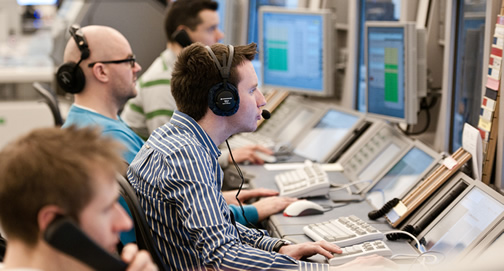As Air Traffic Management (ATM) becomes ever-busier, more complex and more inter-connected across different Air Navigation Service Providers (ANSPs), it is timely to consider how human performance is best optimised for smooth, efficient and safe handling of air traffic.
Human performance is especially important in ATM as it is a 24/7 industry which strongly depends on people. Aviation needs its frontline staff to be on top performance in order to maintain the safety and efficiency of the air transport system.
As part of the FAA/Eurocontrol Action Plan 15 (AP15) group, I’m leading work on putting together a Standard of Excellence for Human Performance. I’ve also co-written a paper for the 18th International Symposium on Aviation Psychology (ISAP) to be held in Dayton, Ohio next week.
But why is the Human Performance Standard of Excellence (HPSoE) becoming so important in air traffic management?
The Human Performance Standard of Excellence (HPSoE) will ultimately help ANSPs gauge their maturity with regards to how human performance is integrated across ATM system design, development and operation.
It frames a business case to invest in human performance using three scales: Business Vision (appreciation of the role of human performance in the safe delivery of service), Human Performance (focusing on all job-related factors at individual, group and organisational levels) and Human Factors (applying scientific knowledge to optimise human-system performance).
ANSPs can use the HPSoE to establish a baseline upon which improvements can be identified and so better manage operational safety risks and improve efficiency and resilience. The business case includes managing costs such as insurance and borrowing.
Human Factors experts are sometimes challenged in communicating their tools and methods to ANSPs. Decision makers want to know things such as whether operations are safe and cost-efficient, has training been effective and will a new system being installed deliver better performance? In contrast, those involved with Human Factors talk about human performance assurance through tools and methods like “training needs analysis” and “human centred automation guidelines”. This is a different language to that used by the decision makers.
In order to help break down this barrier an international approach is being established. The HPSoE recognises that those working in Human Factors need to connect with different parts of the organisation and that their efforts can even act as a catalyst for interactions between organisational stove pipes because they contribute to teams in different departments.
Development of the HPSoE is accompanied with questions still needing to be addressed. This includes, for example, how does the HPSoE scale up or down with different sizes and complexities of ANSPs? What requirements or guidance is used as evidence of maturity assessments? What different paths can ANSPs use to step up to the next level of maturity? Does reaching a certain level of maturity infer comparability across ANSPs rated as having that level of maturity?
It is recognised that Human Factors is by no means the whole answer, but without Human Factors ANSPs will be challenged to reach the most efficient and reliable levels of safe operations. An investment in Human Factors is an investment in safety as well as efficiency. To accomplish this integration ANSPs need a vision and a pathway to build upon in order to achieve sustained improvement in human performance. The HPSoE is a much needed development but further work is still needed and it will be interesting to see what questions the work raises at the symposium.
Comments
Please respect our commenting policy and guidelines when posting on this website.





02.05.2015
12:34
Ian Ramsay
Very pertinent comments Neil. Especially, as we embrace the philosophy on “Open Skies” that may , or may not, deliver what is asked of it and all of the integrated staffs. Multi-tasking, multi-role, high workload , circadian cycles. and physical and psychological performances have their part to play and be monitored and mentored. But, so has the man/machine interface in all of it’s aspects and the greatest one, I believe, is the failure modes of both, in isolation and interfaced.conditions. As far as safety management is concerned a separate focus is now developing towards failure mode identification and it’s assessment as a way towards better management. Laudable, but it must not be taken in isolation. A sighting of your ISAP paper would be very interesting after your presentation at Dayton.
09.05.2015
12:49
Rudolf Müller
Yes, Neil, I fully agree that it is necessary for “decision makers” and Human Factors specialists that they communicate with each other and understand each other. As a matter of fact, many “decision makers” are focusing on metrics like cost-efficiency and performance levels. It is their task to look after efficiency, productivity, safety and other standards relevant for the business. The Human Factors staff on the other hand should address, what PEOPLE need to meet the requirements of the business in a sustained manner. If we, as human factors staff, continue looking at our subject with the view of Newtonian engineers, rather than of PEOPLE experts, we do not contribute meaningfully enough to the Business dialogs. No matter how valuable the definition of human performance standards of excellence may be.
Thank you,
Rudolf
05.07.2017
22:13
George
Maybe 2105 is obsolite for everything related to to 2017 ATC?